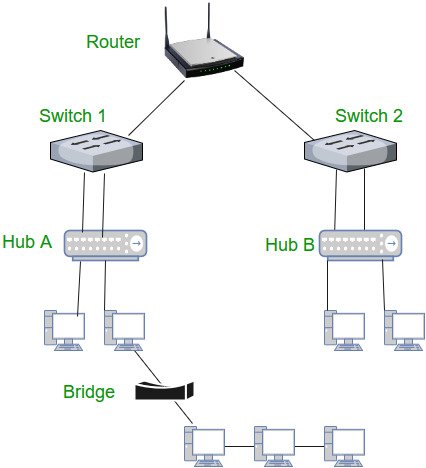Modern day Local Area Networks or LANs ensure knowledge of the communication ways network devices use in sending data. Switches and bridges are the life-saving components of such a system. But, how do switches and bridges learn Device Locations on a network? And, in a connected network, how are hubs and switches similar to one another? These questions are thoroughly answered in this blog.
How Are Switches And Bridges Knowing The Locations Of Devices?
Switches and bridges are used to control network traffic. They accomplish this function by discovering the actual MAC addresses of the devices connected to them. Every device on a network has a unique MAC address assigned to its Network Interface Card (NIC).
When sending data through the network, a switch hits the packet source MAC address, and the connector captures it. It is then stored in the MAC address table- also called forwarding table. This represents MAC addresses associated with instead ports.
Meanwhile, as frames pass through, switches update their MAC tables to reflect changes in mode. This dynamic learning helps the network accommodate changes almost instantaneously and thus cuts down on unnecessary broadcasting.
How are Hubs and Switches Similar in a Connected Network?

Hubs and switches are fairly similar as regards their role; they aim to serve as conduits to connect many devices within a network. The operation itself is different. However, in most rudimentary examples, it will seem that hub and switch operate in just the same way. Both allow joining devices onto a LAN, and both permit data to migrate from one to the other.
However, both of them have some different applications for their operation. A switch, however, sends a specific port to a specific destination addressed for that MAC. Both will appear to facilitate the transmission of multiple computers to share data and exchange messages from a user’s perspective.
Both hubs and switches are plug-and-play devices. They do not require heavy configuration. The use of switches and bridges can strengthen small and temporary networks. Obviously, they provide high performance and data security.
Modern Networks Choose Switches and Bridges for Better Performance

Having looked at how both switches and bridges learn device locations, one can easily understand why they are chosen in contemporary networking. They cut down all traffic by forwarding data only for the appropriate destination. These increase the network speed and create a substantial reduction in collisions, unlike a hub that floods all ports with data.
Bridges are now devices that can connect more than two different network segments, serving as a filter and minimizing traffic between them. Bandwidth effectiveness increases across the network. The same would be possible with managed switches which provide features such as VLAN support, Quality of Service (QoS), and network monitoring tools for both business and homelab environments.
Thus both switches and bridges can create scalable and effective infrastructures for networks, whether within small offices, homes, or enterprise environments.
Final Reflections: Understanding Network Devices for More Intelligent Deployment
Switches and bridges learn Device Locations on a network by constructing and maintaining a MAC address table over time, which allows for the forwarding of traffic from device to device. Hubs and switches might appear to have similar features in the simplest form of network setups, but switches provide increased performance, increased traffic management, and increased security.
Having decided on the right kind of network gear with respect to your target is very important because a switch or bridge is essential to any modern home lab or business network to keep speed running and to avoid data collisions. Look out for managed switches, Wi-Fi 6 routers, and cybersecurity tools that will help improve the efficiency and protection of their networks.




Really appreciate the clear distinction made between switches and hubs—especially how switches build MAC address tables to route data more efficiently. It might also be interesting for readers to understand how switches handle MAC address table overflow or spoofing, which can impact performance or security in larger networks.
Really helpful explanation of how switches learn device locations. It’s easy to forget how much more efficient they are than hubs when it comes to reducing unnecessary traffic on a LAN.
Great breakdownBlog Comment Creation Process of how switches build MAC address tables to route data efficiently. I think it’s especially helpful to contrast this with hubs, which just broadcast blindly—makes it easier to appreciate how switches improve performance and reduce collisions. Looking forward to more posts like this that clarify foundational networking concepts.